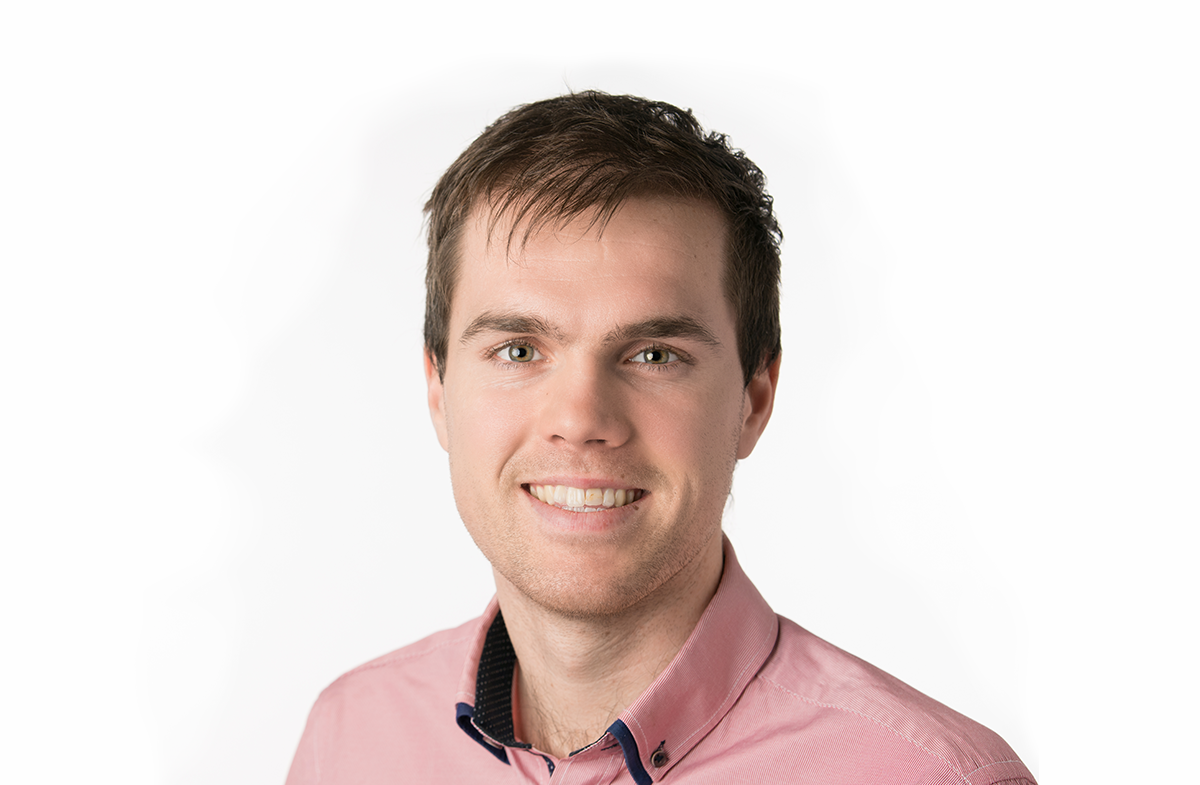
Tell us a little more about yourself, Gavin
Hi, I am Gavin, or Gav. I am a country boy who moved to the city and never made it back. I came to Belfast to join Queen’s University after school, and I have loved the city and connections I have made ever since.
I am a very keen hockey player and enjoy following the sport having played around Ireland and toured Scotland and Northern England with the Queen’s University hockey team. I try to get back to the family farm in Co Donegal, about 2 hours drive away, to help out occasionally. I enjoy the complete separation from the office to a working farm.
Can you tell us more about your professional background?
Having graduated from Queen’s with a MSc in Mathematics and Computer Science I became a trading analyst for an electricity supplier. Shortly into this position I was seconded onto a new trading platform technology project. During this project I was able to design, implement and test the software at various cycles so I had a lot of good exposure. When the project secondment had finished, I moved back to the training analyst position I realised I much preferred the programming aspect and especially MATLAB.
I joined B-Secur’s data team as a Data Analyst in December 2018. The MATLAB experience that I gained was used to create and maintain the data analysis frameworks, which I have overseen since joining. In March 2021 I progressed to the position of Verification Engineer where I am today.
How would you define your role as Verification Engineer at B-Secur?
My responsibilities focus on testing the HeartKey® library. This includes being able to access all public APIs that HeartKey® provides and cover each state transition in HeartKey®’s design requirements. As a verification engineer, I am required to design test cases, implement these test cases, and report the outcomes to the various internal stakeholders.
“The importance of this being that the earlier that a bug is found the easier and less expensive the correction is to implement. Quality is B-Secur’s priority, to deliver reliable and accurate information to the user.”
Can you share some insight on the testing and development process used at B-Secur?
B-Secur employ a number of differing test techniques in two different environments. Unit tests, integration tests, system test and acceptance testing are all used by the B-Secur technology teams. The back end HeartKey® Evaluation Systems are thoroughly tested for each release. A number of automated test scripts created and triggered in the data analysis frameworks are supplemented by manual tests triggered by engineers for each HeartKey® release.
During the verification tests, the focus is on ‘are we developing the product right’ therefore constant referral to the design documents is required. Verification reports are created and shared to the relevant parties once testing is completed. Our Validation team source external protocols and research into relevant standards and best practices, using gold standard devices to compare against.
What has been your most rewarding experience with B-Secur to date?
B-Secur is a fast-paced growing start-up. Through almost three years I have had exposure to lots of different technical projects, accelerating my comprehension in the various systems.
“I have gained a considerable amount of rounded knowledge that I could not have achieved if working in a less diverse environment. One such project was the FDA submission that HeartKey® was successful with in 2019. It was terrific to be involved in such a prestigious and rewarding project.”
The landscape of ECG technology and its applications is changing exponentially. How do you ensure B-Secur remains ahead with such fast-paced development?
B-Secur are driven by the quality of their products. This has been shown in the external validation by FDA and CSIT accreditation.
If we continue with this focus on quality as HeartKey® expands then the customers will determine that B-Secur is providing, or capable of providing, the correct solution for them. Our innovative algorithm team are always working to grow our current functionality with a desire to be at the cutting edge of ECG technology.
In your opinion, what’s next for healthcare and technology?
With the trajectory of online services in the financial and retail sectors accelerating massively over the last couple of years it is my belief that similar health care systems will be the mould of the future.
If data can be monitored by a patient and reported to their medical practitioner in sufficient detail this will allow better decisions to be made for diagnosis and treatments. This would aid and assist the busy practitioners with the potential to reduce wait times as well as diagnosis times.
It is common for me to hear stories of people avoiding making an appointment with a doctor or being put off by waiting times. If health care devices and services become more accessible the inconvenience that can come with appointments at a doctor’s surgery could be negated by retrieving reliable information from the apprehensive patient from the comfort of their daily or weekly routines.